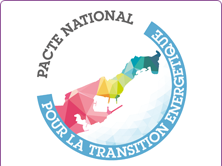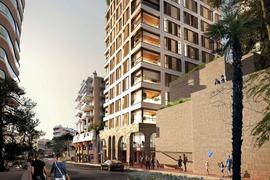The circular economy in buildings. Two public buildings setting the example: Villa Carmelha and Bel Air
Let’s kick off with a deceptively simple question:
What is the circular economy?
The circular economy is an economic model where the aim is to produce goods and services in a sustainable way, limiting the consumption and wasteful use of resources (raw materials, water, energy, etc.) as well as the production of waste at every stage in a product’s lifecycle.
This sustainable system minimises waste and draws on a variety of conservation and recycling methods to break away from the current, linear “take-make-dispose” approach.
So how does it apply to the construction industry?
With regard to the building and construction industry, which is important in Monaco, what are the main principles and concrete applications of the circular economy?
The European Union has set a target of 70% for the recovery of materials and waste produced by the construction industry (with a view to reusing, recycling or otherwise recovering it); in Monaco, the Sustainable Mediterranean Buildings of Monaco (BD2M) strongly encourages companies to do this. The waste recovery target should help to reduce the use of natural resources and, consequently, carbon emissions .
Reducing its carbon footprint is a challenge that is having a broad impact on the construction industry. Reuse and the circular economy offer one solution as the sector seeks to roll out a low-carbon strategy. Materials produced as a result of demolition must be better managed, by systematically carrying out diagnostic assessments in advance of the work being done to provide an overview of the construction site and better visibility of possible outlets for the reuse and recovery of construction materials.
The first public applications in Monaco...
BEL AIR
Public project to construct state-owned apartments using the BD2M approach, silver level
The project stands out for its innovative circular economy aspect, including:
- the allocation of one person dedicated to this issue on the project: an assistant project owner for reuse
- reuse of the boiler room from the old Bel Air building in another public building
- recovery of burners by a maintenance firm
- recovery of various items of equipment in partnership with La Turbie City Hall (fire extinguishers, awnings, individual air conditioners, etc.)
In terms of materials, the insulation will be made from recycled cotton and recycled glass, and low-carbon concrete will be used. In addition, shared spaces will be prioritised, including a vegetable garden and an area for swapping items.
VILLA CARMELHA
Carmelha, a state-owned, eco-friendly building, adheres to the BDM approach, gold level
Renovation, recycling, reuse of materials... The Villa Carmelha residential construction project has adopted a circular economy approach, making it possible to reuse and repackage around a third of the elements produced as a result of demolition and identified in advance, saving in the region of 7 tonnes of CO2 equivalent.
Through this project, Monaco has relisted for sale materials from demolished buildings. This is a great idea from the company Cycle Up (a digital platform established in March 2018), which recovers building materials and components that would otherwise end up as rubble. (We previously reported on this in 2020: https://www.gouv.mc/Action-Gouvernementale/L-Environnement/Actualites/Les-Rencontres-de-la-transition-energetique-avec-la-presse-3eme-edition )
Highlights from Villa Carmelha:
- Salvage of bricks from the villa and the pavement to create outdoor paving
- Involvement of Cycle Up to assist with resale, recycling or reuse
- Minimal use of new materials
Remember that the circular economy is first and foremost a collaborative economy. This is why it is vital to continue to develop partnerships and synergies, particularly with local stakeholders in the social and solidarity economy and with manufacturers.


[#YourMonaco]
— Gouvernement Monaco (@GvtMonaco) July 31, 2020
La Principauté se dote d'un nouvel outil de communication urbaine. https://t.co/5f1DsYi2No






